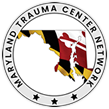Did you know that in the United States, more than 3,000 children, under the age of 15, are rushed to the emergency room each year due to firework related injuries? Over 85% of firework injuries occur between the months of June and July.
It’s that time of year, where families and friends are getting together to have picnics, bonfires, and celebrations. What’s a celebration without fireworks! The best way to enjoy fireworks is to leave it to the experts and attend a public display.
If you choose to have fireworks for your celebration, follow these tips:
-
- Never allow young children to handle them. Even sparklers can burn up to 2,000 degrees Fahrenheit!
- Older children should be under close adult supervision when using fireworks.
- Adults should never use fireworks while impaired or intoxicated.
- Wear protective eyewear when lighting fireworks.
- Keep fireworks away from people, houses, and flammable materials.
- Never point or throw fireworks at a person.
- Only light one firework at a time.
- Do not try to re-light a malfunctioning firework.
- Keep a bucket of water nearby, just in case.
- Only buy legal fireworks, never try to make your own.
- Think about your pets… pets have sensitive ears and can be very frightened or stressed when hearing fireworks.
Instead of purchasing fireworks, think of alternative ways to celebrate, for example, using glow sticks, streamers, confetti poppers, silly string, etc. You can still celebrate, just in a safer way!
Nearly 22% of firework injuries involve the eyes. If an eye injury does happen, cut out the bottom of a paper cup, place it around, the eye, and seek medical attention. Do not touch or rub your eye, and do not flush eye out with water.
What to do if you or your child get burned?
- Remove clothing and jewelry from the burned area.
- Run cool water over the burn.
- Loosely cover with gauze or clean dry cloth.
- Seek medical attention.
On this 4th of July, make it a safe one!
For more tips and information, visit www.safekids.org or www.nsc.org.
Follow the Johns Hopkins Pediatric Injury Prevention Program on Twitter @JHCCTraumaBurn.
By: Beatrice Brathwaite, Senior Injury Prevention Coordinator & Creason Schafer, Community Outreach Specialist
Johns Hopkins Children’s Center


